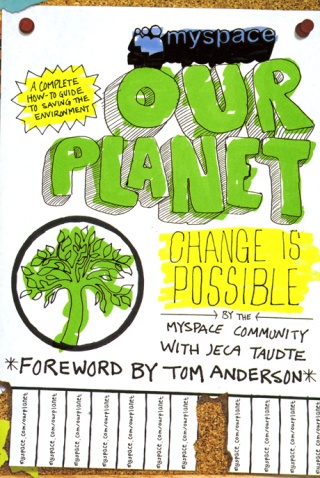Children’s books are going green. Everywhere I turn, I find fleecy books for babies made from recycled plastic, board books printed with soy ink, new earth-friendly editions of “The Tale of Peter Rabbit” and “The Lorax,” and, best of all, green guides for all ages. Children and teenagers who want ideas for how to tread more lightly on the Earth have lots of books to choose from.
Written for children ages 3 and up, Melanie Walsh’s “10 Things I Can Do to Help My World” is an excellent choice for a first book about helping the environment. With the simple actions that Walsh includes, such as turning off the lights when leaving the room, turning off the tap when brushing one’s teeth, and using both sides of the paper to draw on, she reminds us that children — often seen as one of society’s most powerless groups — can, in fact, make a difference. The book’s format emphasizes this message: large flaps reveal hidden pictures with each page turn. A cloud of exhaust turns over to reveal a child and adult walking to school instead of driving. The child turning pages changes the image in the very moment that she is offered a way to bring about change in the larger world.
In her introduction to “101 Ways You Can Help Save the Planet Before You’re 12!”, Joanne O’Sullivan pulls her 8- to 12-year-old readers into a huddle for an eco-pep talk. You can be superheroes, she tells them. You can save the planet. In an ingeniously simple, but empowering statement, she urges kids to use their smarts to “come up with ways to help the Earth that today’s grown-ups have never thought of.” From energy-saving tips to suggestions for community-based outreach and resources for Internet research, this book is more than just a list. Bright photographs draw readers in; concise explanations accompany each recommendation. Parents will applaud some ideas, such as “Do Your Homework First” (when one can use sunlight instead of lamplight), and cringe at others, like “Stay Dirty” (wait to do laundry until the clothes really need it), but for the sake of our planet, perhaps everyone can recognize the positive potential of our children growing up green and the benefits of a brilliant book such as this.
The bad news about these two titles? Both are printed overseas. Still, they are made with recycled materials, which cannot be said of most books these days, whether manufactured in the United States or not. It is certainly worth pointing out a book’s publication information to young readers, as one way to increase awareness of how many objects in our daily lives are made in distant places.
Excellent green guides for tweens and teens will offer concrete suggestions for how kids can help older generations make earth-friendly decisions. Middle schoolers can’t drive yet, but they can talk to their parents about carpooling, walking to the store instead of driving, and buying a hybrid next time the family needs a new car. The short essays in “Recycle This Book: 100 Top Children’s Book Authors Tell You How to Go Green” offer glimpses into the private lives of some of our favorite writers — James Howe drinks out of mason jars, Ann Brashares doesn’t have a drivers license — but also tell the stories of the children who influenced these adults, who pestered them about recycling or turning the lights out the way that past generations pestered their parents about quitting smoking. For children’s book lovers, this is the People magazine of green guides. But it is also the guide that works the hardest, on the most personal level, to convince children that people will listen to them. What it lacks in color and visual imagery, it makes up for in content.
With sections on “Your Free Time,” “Eco-dating” and “On the Road,” “MySpace/Our Planet: Change is Possible” is clearly a book for teenagers. Written by Jeca Taudte and the MySpace community, this green guide is easy to navigate, with bulleted points and bold subject headings. “Micro” and “Macro” indicate the potential impact that an action will have, while levels of “Green,” “Greener” and “Greenest” encourage teens to compete with themselves. How green can you go? Personal testimonies from MySpace contributors and the humorous delivery of statistical information make this book particularly teen-friendly. After all, did you know that wind and hydro power would cost an average New York City resident only $3.50 more per month than standard electricity? “That’s only, like, 3 1/2 Neil Diamond songs on iTunes.”
Galen Longstreth, a Mercer Island High School graduate, has an MFA in Writing for Children and Young Adults and an MSEd in Early Childhood and Elementary Education. She works at Powell’s Books in Portland, Ore. She can be reached at glongstr@gmail.com.


